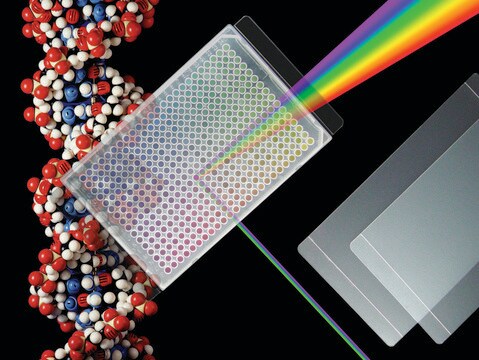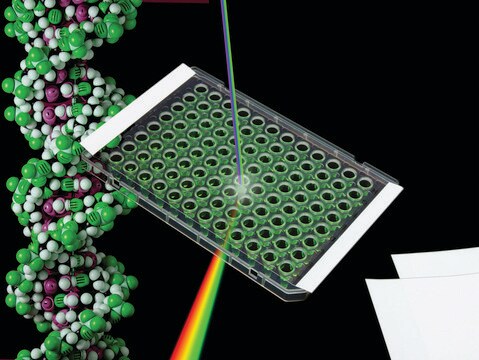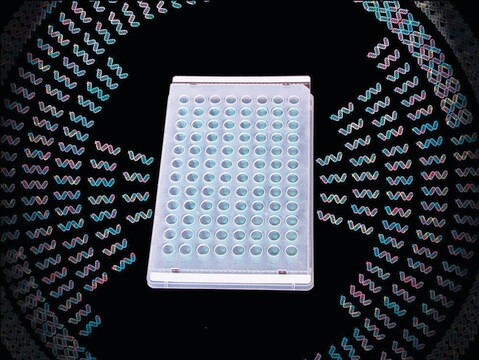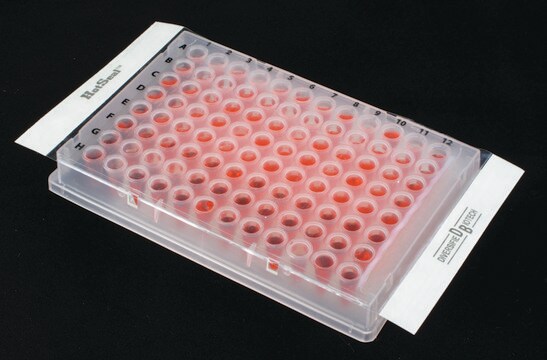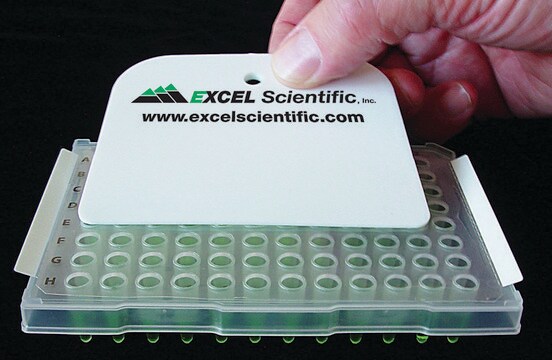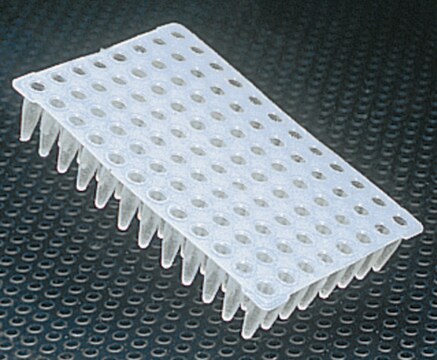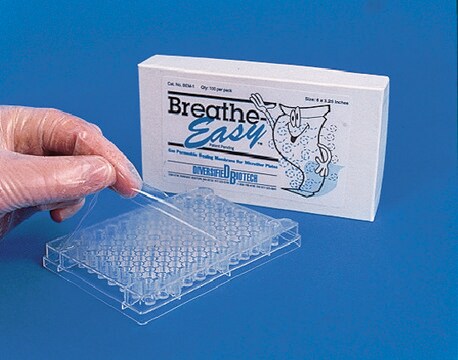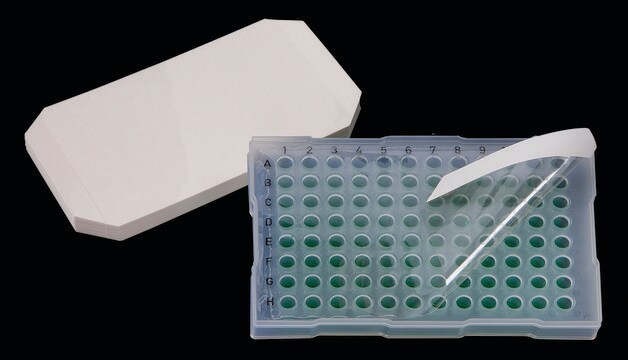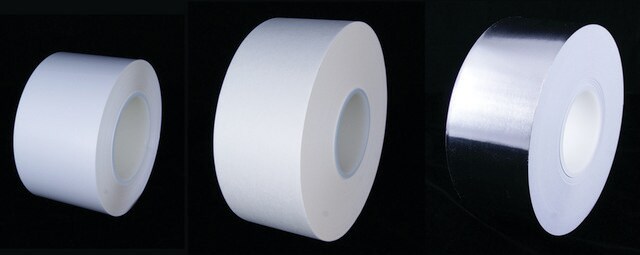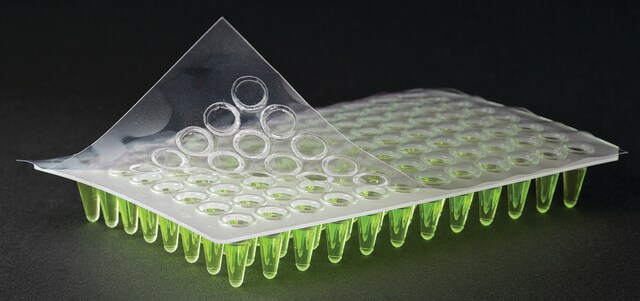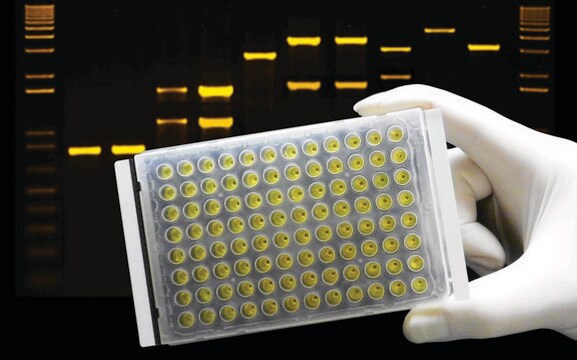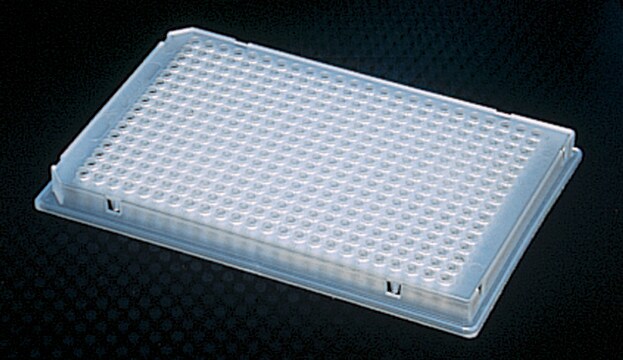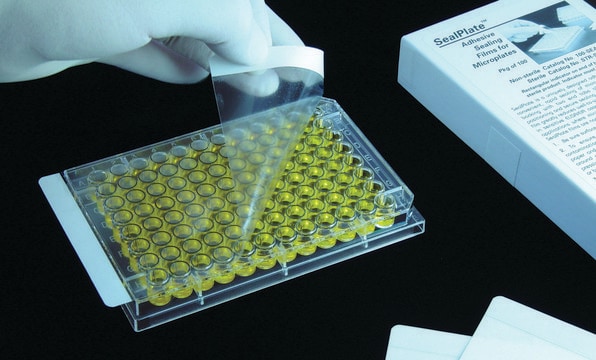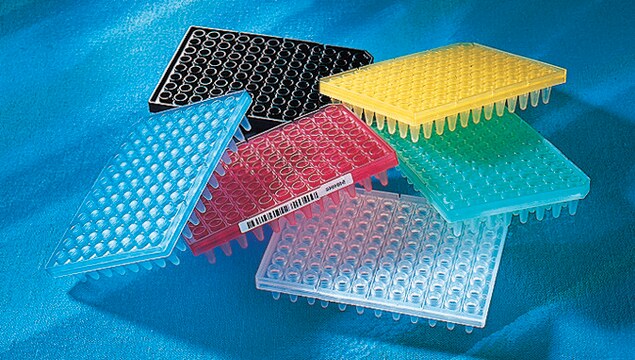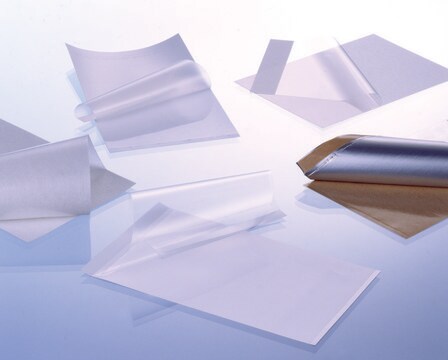Z722553
ThermalSeal RT2RR™ film
non-sterile, sealing films for real-time qPCR
Synonym(s):
ThermalSeal RT™ film, real-time qPCR plate seal
About This Item
Recommended Products
material
polyester film
sterility
non-sterile
packaging
pack of 100 ea
manufacturer/tradename
Excel Scientific TS-RT2RR-100
technique(s)
PCR: suitable
qPCR: suitable
L
130.6 mm
W × L
7.78 cm × 13.08 cm
W
77.8 mm
color
clear
Looking for similar products? Visit Product Comparison Guide
General description
- Ultra-high optical clarity
- Heat resistant, recommended for temperatures from -40°C to +120°C
- Certified DNase, RNase, and nucleic acid free
Dimensions 77.8 by 130.8 mm. With end tabs removed, length is 118.1 mm with 45° corners.
- Ultra-high optical clarity
- Fit within plate rim to prevent evaporation due to sealing film lifting
- Heat resistant, recommended for temperatures from
- -40 °C to +120 °C
- Certified DNase, RNase, and Nucleic Acid free
Legal Information
Choose from one of the most recent versions:
Certificates of Analysis (COA)
Don't see the Right Version?
If you require a particular version, you can look up a specific certificate by the Lot or Batch number.
Already Own This Product?
Find documentation for the products that you have recently purchased in the Document Library.
Customers Also Viewed
Protocols
The most common application for qPCR is the measurement of a gene transcript or copy number quantity relative to one or more reference genes using probe detection.
A protocol that can be used as a basic template for qPCR incorporating a detection probe that is specific to a single target. In these reactions, primers and probe are included at a final concentration of 200 nM and are run using LuminoCt® ReadyMix™.
A protocol that can be used as a basic template for qPCR incorporating up to four detection probes. In these reactions, primers and probe are included at a final concentration of 200 nM and are run using LuminoCt ReadyMix.
Primer Concentration Optimization Protocol is an approach to create a matrix of reactions. This is used to test a range of concentrations for each primer against different concentrations of the partner primer.
Our team of scientists has experience in all areas of research including Life Science, Material Science, Chemical Synthesis, Chromatography, Analytical and many others.
Contact Technical Service